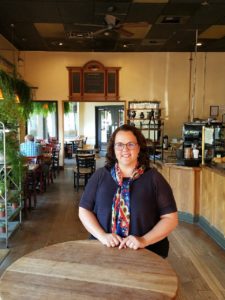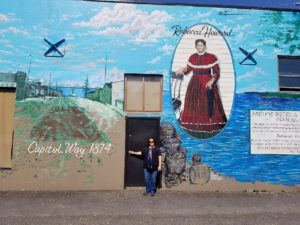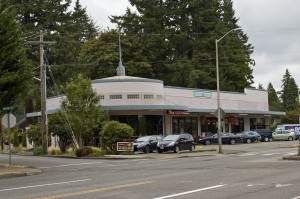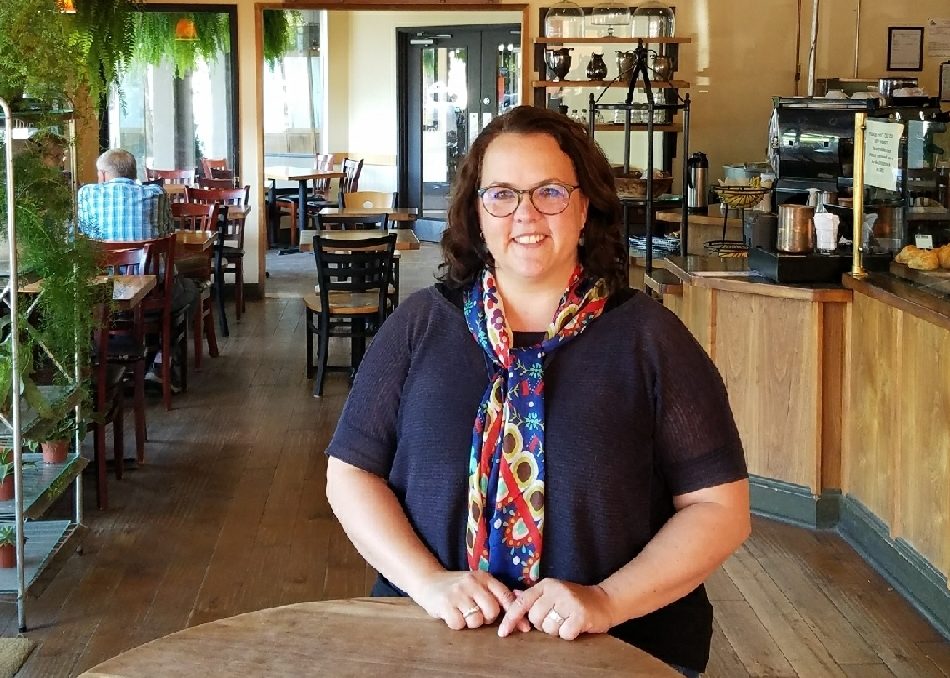Michelle Sadlier thought she would be an architect. She was a student at Tulane University in New Orleans and was drawn to design and art. But during classes, her professors would tell her to imagine herself designing a home, and she realized that she preferred thinking about the stories inside them. Eventually she found her vocation, which involves a fusion of design and anthropology.
 Sadlier is the historic preservation officer for the City of Olympia and a City of Tumwater historic preservation commissioner. Finding Olympia was a twisting road, but three and a half years ago she was drawn to our eclectic town. After graduating with a bachelor’s degree from Tulane, Sadlier discovered an opportunity to teach English abroad. It was post-communism ing the Czech Republic and the need for foreign language teachers was high. There she became interested in vernacular architecture.
Sadlier is the historic preservation officer for the City of Olympia and a City of Tumwater historic preservation commissioner. Finding Olympia was a twisting road, but three and a half years ago she was drawn to our eclectic town. After graduating with a bachelor’s degree from Tulane, Sadlier discovered an opportunity to teach English abroad. It was post-communism ing the Czech Republic and the need for foreign language teachers was high. There she became interested in vernacular architecture.
“It’s like folk architecture,” Sadlier explains. “In one village, the houses would look a certain way, and in another they would have different details.” Her love for vernacular architecture led her to pursue a master’s degree in historic building conservation at the University of York in the UK.

Photo credit: Noelle Nicholson
Sadlier stayed in England after graduation, finding work in the historic town of Maidstone. She worked for the town and surrounding municipality where there are 42 historic districts, including many thousands of historic buildings. “Anytime anyone wanted to do anything to their home, they had to get the change approved,” she explains. Sadlier loved working in the field. “One day I would visit a castle, and a thatched house the next.” Advising locals on ways to modernize their homes while retaining the integrity of their home’s style was extremely rewarding. This English town may have been architecturally different from Olympia, but it is where she learned to do the work she loves.
Today, Sadlier provides the same hands-on approach when helping those who decide to preserve their historic homes and businesses in Olympia. “When you see a plaque, it means someone has come forward to have their home recognized,” Sadlier explains. “We want people to preserve their homes but have modernized [conveniences].” She assists by diving into the archives and teaching owners to research. She also partakes in planning architectural events, such as October’s Docomomo tour in Olympia, an exposition of the city’s modern buildings, and regularly meets with officials regarding important planning for the future of Olympia’s downtown.
Our historic preservation officer’s job also intertwines with archeology. Sadlier plays a diplomatic role while working with local tribes. Often, she works with the Nisqually Indian tribe, and occasionally with the Squaxin Island and Chehalis tribes. She makes sure tribal officials are aware of activity that might affect the area. When plans for a trail arise or when someone finds a potential archeological find, she collaborates with her counterpart who does historic preservation. “The idea is that we try to preserve anything that could be important to tribal stories,” Sadlier explains.

Photo credit: Noelle Nicholson
Sadlier loves the eclectic feel of Olympia’s architecture. “If you’re in Port Townsend, it’s like a snapshot in time, from a very similar period.” She notes that fortunes were high there in the 19th century, but the economy stalled, preserving one particular style. Olympia, on the other hand, has experienced steady development throughout its history. “Olympia keeps evolving. There are all these different eras that are mixed up. You can stand on one corner and see the different periods of history, which I love.”
When speaking about downtown, she mentions her favorite buildings – the ones housing the Spar Café and Da Nang are two of her favorites on 4th Avenue in Olympia. They were both designed by the same architect, Joseph Wohleb. “He was the Frank Lloyd Wright of Olympia,” says Sadlier. Wohleb designed over 150 Washington buildings between 1913 and 1940, often working on projects with his son, Robert. The two buildings on 4th Avenue mark his experimentation with modernism. Mission revival style was his trademark, such as the current Olympia Press building with its stucco and tiled roof, on Capitol Way. One of Sadlier’s favorite designs by Wohleb is the Capitol Court Building on the capitol campus. “It has eagle gargoyles. It’s made from Tenino sandstone. It looks austere, but to me, the sandstone gives it a nice softness.”

Sadlier has observed that in Olympia, local owners do a great job of using modern design in ways that fit the original character of their buildings even though some have not been placed on the historic register. One example is the Wildwood Building on Capitol Boulevard which retains its original art deco style.
Sadlier loves living and working in Olympia because of the stories she hears. “So many times in Olympia someone says to me, ‘When I bought this house, the previous owner left me a stack of photographs.’ People are really passionate about the stories. When you hear history from locals, it’s the story of our community, to be trusted.”
People sometimes ask her if working in Olympia could possibly be as exciting as working in an English town with 500-year-old houses. “What people don’t realize is that everything is relative,” Sadlier says. She smiles. “Historical preservation isn’t about the past . . . it’s about the future.”





















































